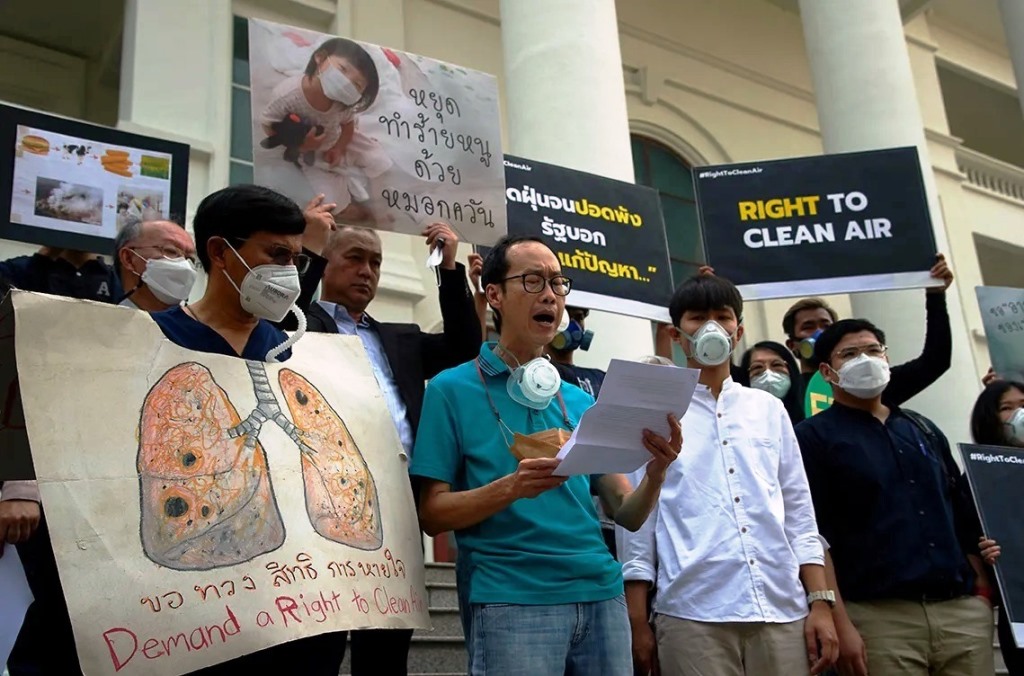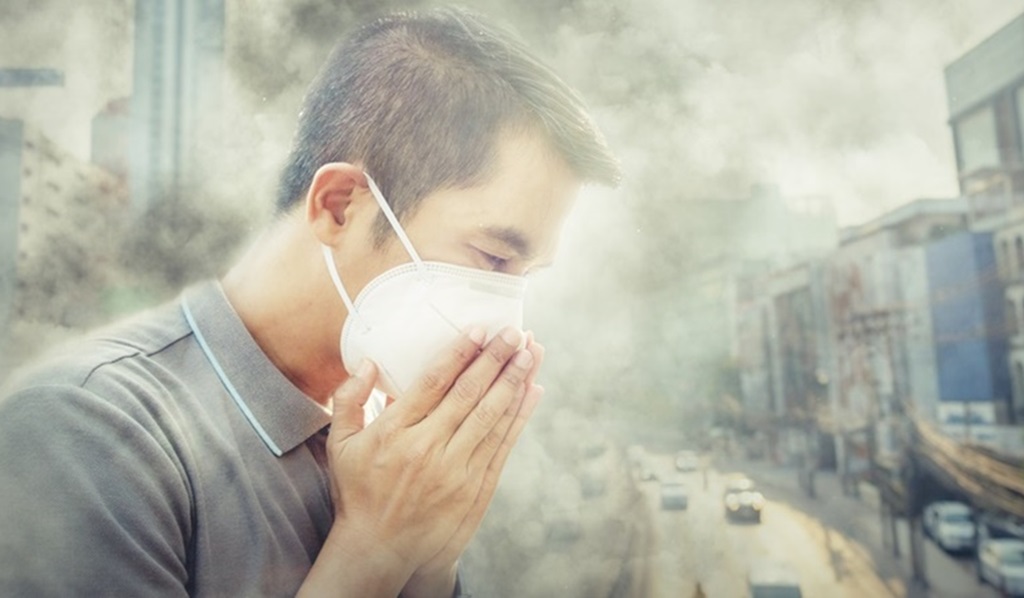People in northern Thailand, particularly Chiang Mai and Lampang, have a high mortality rate owing to lung cancer. The Faculty of Medicine at Chiang Mai University has identified increased levels of PM2.5 particles in the air as one of the primary culprits.
According to Associate Professor Chalerm Liewsisakul of Chiang Mai University’s (CMU) Faculty of Medicine, PM2.5 pollution in northern Thailand has worsened over the last decade, increasing in patients suffering from lung ailments.
According to one study, the rate of lung cancer deaths per 100,000 persons in the North climbed from 20.3 in 2010 to 30.7 in 2019. This compares to data for Bangkok (14.9 in 2010 to 22.6 in 2019), the Northeast (10.2 in 2010 to 17 in 2019), and the South (9.5 in 2010 to 16.8 in 2019).
According to data from 2010 to 2021, Chiang Mai and Lampang in Northern Thailand have the highest death rates from lung cancer. This emphasizes the critical need for tailored initiatives to combat air pollution and its health impacts in these locations.
“In addition, the incidence of lung cancer among young people in the northern region is higher than in other locations. This correlation is most likely due to PM2.5 pollution, according to global data confirming the increased cancer risk, particularly lung cancer, associated with continuous exposure to PM2.5 particles,” he stated.
He cited a Faculty of Medicine study focusing on emphysema patients in Chiang Dao, an area known for high PM2.5 levels.
Cell study from emphysema patients’ cheek scrapings revealed significant cellular alterations when PM2.5 levels were high vs low. He said these changes indicate genetic anomalies that may lead to cancer cells in the future.
Furthermore, respiratory illnesses ranging from nosebleeds to persistent coughs have increased during elevated PM2.5 levels, notably in March and April in northern Thailand.
Severe illnesses such as emphysema exacerbation, coronary heart disease, and strokes are particularly common at these pollution peaks, emphasizing the acute health hazards associated with elevated PM2.5 levels.
A CMU’s Faculty of Medicine study found a concerning correlation between PM2.5 levels and deaths in Chiang Mai. For every 10 µg/m³ increase in daily average PM2.5 concentration, Chiang Mai’s mortality rate increased by 1.6% over the next six days.
The lab also determined the cause of death for Prof Rawiwan Olarnratmanee, a former dean of Chiang Mai University’s Faculty of Architecture. Test results revealed that the cancer cells discovered in her lungs had genetic abnormalities caused by PM2.5 exposure.
Her husband, Jittrakorn Olarnratmanee, stated that she was diagnosed with late-stage lung cancer in February and died from the disease on April 3. She was one of four university instructors who died from lung cancer in 2022.
According to Maharaj Nakorn Chiang Mai Hospital, 30,339 patients sought treatment for pollution-related disorders between January 1 and March 15, double the number from last year.
On Saturday, IQAir.com stated that the province has returned to the top of the list of cities in the world with the poorest air quality, with the Air Quality Index (AQI) reaching 237 at 8.52am.
Transboundary Haze in Northern Thailand
In recent weeks, northern Thailand has seen some of the world’s highest levels of air pollution. In Chiang Mai, the air quality index measuring particulate matter (PM2.5) remained above 300 for two weeks beginning March 25th, 20 times the World Health Organization’s upper limit.
On April 7th, Thai Prime Minister Prayuth Chan-ocha met with counterparts from Laos and Myanmar to explore collaborative actions to address the transnational issue.
Air pollution is a serious economic and public health issue in Thailand. Peaks normally occur during the dry season (November-February) and occasionally extend into April. Slash-and-burn farming is the primary culprit, and forest fires worsen the problem.
The problem has resurfaced and gotten worse in recent years, corresponding with the growth of commercial farming. Large agricultural producers, for example, hire rural farmers to grow cash crops for animal feed. Farmers who work on larger projects use slash-and-burn farming to clear their fields rapidly and prepare them for the following crop.
Thailand’s current situation is similar to the haze pollution that impacted Singapore in the 2010s, which resulted from commercial farming on the Indonesian island of Sumatra.
Singapore has to seek Indonesia’s assistance to address the issue. According to a study by the local Kasetsart University, the cost of air pollution is considerable, at around Bt2 trillion (US$60.2 billion), or more than 10% of GDP, due to negative consequences on the economy and public health, such as loss of output, income, and early death.
Air pollution also reduces visitor revenue during Thailand’s peak season. Hotel occupancy in Chiang Mai, the country’s third-largest city and a renowned tourist destination, was only 45% ahead of the important Thai New Year holiday, compared to an average of 80% over the same period.
With a general election scheduled for May 14th, the administration and various political parties have been pushed to take a stand on air pollution. In actuality, little has been done to solve the haze issues of recent years.
Better awareness and a better-coordinated effort by Thailand, Laos, and Myanmar to address the haze problem are welcome, but given Laos and Myanmar’s low government performance, they will not result in a quick solution.
Thailand will discuss transboundary haze at the next ASEAN conference in May. The issue will resurface throughout the dry season and continue to pose economic and health concerns, particularly in northern Thailand, for the foreseeable future.








